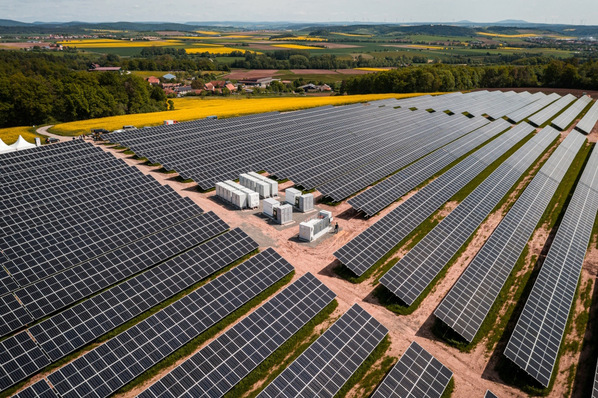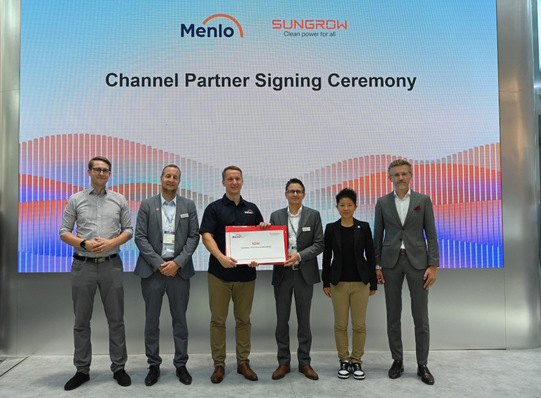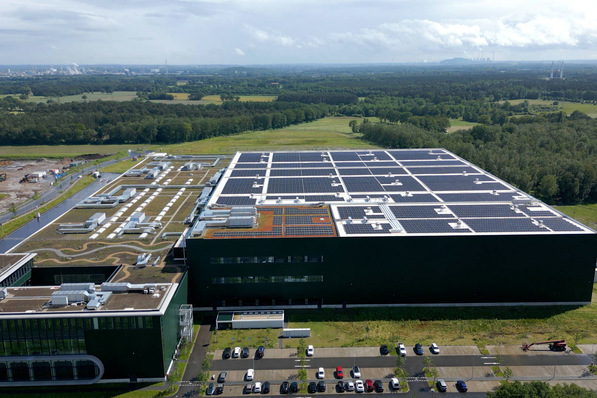You are in charge of Viessmann’s new PV + E-systems division. What exactly is involved in that?
Karlheinz Reitze: The new division is intended to focus on the introduction of intelligent generation and consumption of electricity to building services. What was the heating division will be extended. The customers’ opportunities for becoming mostly self-sufficient will expand. We want to offer various packages to our customers and the installing companies, from entry-level to all-encompassing systems: always focussed on the customers and their needs.
What groups of customers do you have in mind?
We are thinking of solar technicians, electrical installation engineers and the sanitary, heating and air conditioning companies that cooperate with electrician’s companies or have staff competent in installation. Electricity now is an essential part of building services. For a house of the KfW-40 standard, storage batteries are mandatory. Hot water generation and ventilation are closely connected to PV. In order for the variety of systems to actually work efficiently and conveniently requires a smart energy management system, which should be able to be controlled via a mobile device like a smart phone or a tablet computer.
Customers are demanding more and more independence. Is that a trend you also see?
More than that. For instance, it will also be about utilising over-capacities from the power grid in building services. This can and will bring about economic benefits for the users. PV is available during the summer and in the winter we will see a surplus of wind power. Such offerings can be made use of through storage batteries, electric vehicles, thermal storage systems or direct consumption in the building.
Are you providing the equipment to completely run a building on electricity?
We have outfitted some show homes so that they run entirely on electricity. For newly built houses and for companies selling prefab homes that will become significant. For existing buildings, electrical and thermic systems will complement each other. We currently offer about 90 percent of the components needed for a fully electrical energy supply. For instance, we will introduce electrical underfloor heating or electrical water heaters to our product range.
But it is not just about supplying the building. Installing companies increasingly provide their customers with electric chargers for cars and other vehicles. What do you offer in terms of electric mobility?
Electric mobility is increasingly calling for fuel cells that take care of the charging during the night. With our Vitovalor 300-P, Viessmann have had an electricity-producing heating system, produced at scale, in our product range since 2014. In combination with PV and stationary storage batteries, this can be used to build a variety of electrical systems. But we even go beyond that:
The company Digital Energy Solutions – a 50/50 joint venture of Viessmann and BMW – will increasingly offer electricity products. To start with, our colleagues at Digital Energy Solutions have issued an electricity tariff for heat generation – for heat pumps or for thermal storage.
The joint venture will soon also offer concepts for charging points that will be controlled through the energy management system. 80 percent of vehicles that are charged at home spend most of the day at the workplace. This calls for systems that allow the feeding of electricity back into the building. Bi-directional charging systems are coming and will dominate this market.
How many fuel cell heating systems have you sold yet?
We have sold more that a thousand units, and we are seeing a growing demand. The stack and the reformer are being supplied by our partners Panasonic. In the Japanese market, they already have 100,000 units being used. Integrating the fuel cell module into the overall system as well as its overriding management was achieved by our engineers. All in all, the Vitovalor 300-P consists of the PEM fuel cell, a gas condensing boiler for peak heat demand, a buffer storage unit and the already mentioned control unit, which of course has Internet connectivity and can be controlled by an app. The fuel cell alone has an electrical output of 750 watts and one kilowatt of thermic output. The peak load boiler produces an additional 19 kilowatts of heat, and from this summer it will be 26 kilowatts. The system will be installed in a heat-driven manner.
When will Viessmann come out with an electricity-driven system for buildings with very small heat demand?
I do not want to give away too much. We are keeping an eye on that. Maybe for next year. The fuel cell can already be run in cycles, such as when there is less demand for heat in summer and the PV provides supplementary power. We outfitted a building in Munich where the fuel cell also charges the battery of a BMW i3. Along with the electricity and heat for the building, the energy management system also has to efficiently manage e-mobility.
What does the future hold in your division?
We currently have a little over 50 staff. Now we plan to expand our division and mesh it with the Viessmann Group’s other channels. We will hire new people in order to continue to serve our clientele. Right now we are looking to hire field staff as well as internal employees. We want to put together useful packages for our customers to make it easy for them to get started. One example is our heating water buffer Vitocell 100-B with an electrical heating element for using surplus solar electricity. But our focus is less on the technology or the technical equipment, but the customer and his needs. These are becoming ever more wide-ranging and demanding. (interview: Heiko Schwarzburger)
More useful information about energy storage systems
Choose your right solar panels
Learn about electric cars to make more use of energy storage
Stay informed, get our free newsletter twice a week, register here







